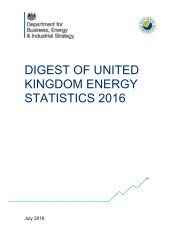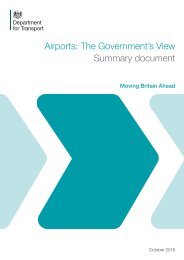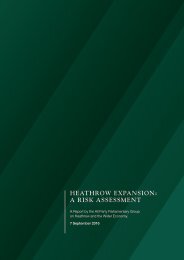20131211-2013.12Reports
20131211-2013.12Reports
20131211-2013.12Reports
You also want an ePaper? Increase the reach of your titles
YUMPU automatically turns print PDFs into web optimized ePapers that Google loves.
Summary<br />
The Airprox occurred within the Wellesbourne airfield ATZ, whilst both aircraft were receiving a BS<br />
from the FISO. The PA18 was carrying out right-hand circuits to the grass RW18. The R44 was<br />
operating in the right-hand helicopter circuit to Heli ‘W’. The helicopter circuit is designed to segregate<br />
it from the fixed-wing circuit and relies upon the helicopters following the published circuit pattern to<br />
Heli ‘W’. The R44 pilot was not aware that the PA18 was using the grass RWY when her helicopter<br />
was positioning to the grass area adjacent to RW18. This resulted in the R44 descending into close<br />
proximity to the landing PA18 which took avoiding action by commencing a left turn on the ground<br />
during which a ground loop ensued. The grass RW18 is not promulgated in the UK AIP.<br />
PART B: SUMMARY OF THE BOARD’S DISCUSSIONS<br />
Information available included reports from the pilots of both aircraft involved, the FISO’s report, and<br />
a report from the appropriate ATC authority.<br />
The Board first considered the actions of the PA18 pilot and then the R44 pilot, both of whom were<br />
operating on the Wellesbourne FISO frequency.<br />
The PA18 was operating on a training flight to the grass RW18. The pilot was aware from the RTF<br />
that a helicopter was on final approach to Heli ‘W’ but, because the helicopter circuit and the fixedwing<br />
circuit are segregated at Wellesbourne, she expected the helicopter to be outside the ‘protected<br />
zone’ for fixed-wing traffic. However, approaching the grass runway threshold, she became aware<br />
that the helicopter had deviated from the helicopter circuit and was descending over the grass runway<br />
ahead of her PA18. A civil pilot member explained that from her seat in the back of the aircraft,<br />
because of the high wing, it would not have been possible to see the helicopter any sooner, whilst it<br />
was descending in her direction. Action was taken which resulted in a ‘ground-loop’ and the wing<br />
nearly touching the grass.<br />
Turning to the R44 pilot, at the time of the Airprox she was supervising a Proficiency Check in the<br />
helicopter circuit. In the view of several members, she had become absorbed in that task and was<br />
not sufficiently aware of the presence of the PA18, even though its pilot had reported on RTF that<br />
they were making a final approach to RW18 grass. They also found it most surprising, in view of her<br />
experience at the airfield, that she did not know of the presence of the grass runway. However, in her<br />
defence, the Board noted that, at the time of the Airprox, no reference was made to the grass runway<br />
in the Wellesbourne Aerodrome and FISO manuals, nor is there any reference on the relative page of<br />
the UK AIP entry for Wellesbourne. The Board considered that this lack of formal information was a<br />
key contributory factor in the occurrence. On approaching the airfield on this occasion, instead of<br />
positioning well to the west of the main RWY and routeing towards Heli ‘W’, in accordance with the<br />
helicopter circuit procedure, she allowed her candidate to approach towards the main RWY and,<br />
consequently, the grass RWY alongside, in the mistaken belief that her aircraft was the only one in<br />
the circuit pattern. Because neither she nor her candidate were aware of the presence of the PA18<br />
landing on the grass RWY (despite radio calls being made to that effect), the Board therefore<br />
considered that the cause of the Airprox was that the R44 crew flew into conflict with the PA18, which<br />
they did not see.<br />
The Board then considered the Category of risk. It was apparent that this was a very serious incident<br />
whereby, effectively, the PA18 pilot was presented with a situation where timely avoiding action was<br />
not possible. The fact that the PA18 pilot was able to swerve clear whilst on the grass was fortuitous,<br />
albeit nearly resulting in an accident in its own right. Some Board members thought that the action<br />
taken by the PA18 pilot had prevented the collision, albeit with safety margins much reduced below<br />
the normal. However, the majority felt that this was a far more serious incident, that an actual risk of<br />
collision had existed, that it had been avoided only by the very slimmest of margins and that nothing<br />
more could have been done to improve matters. It was agreed that an aircraft accident had only<br />
been narrowly avoided; therefore, it was decided that the risk Category should be A.<br />
5







